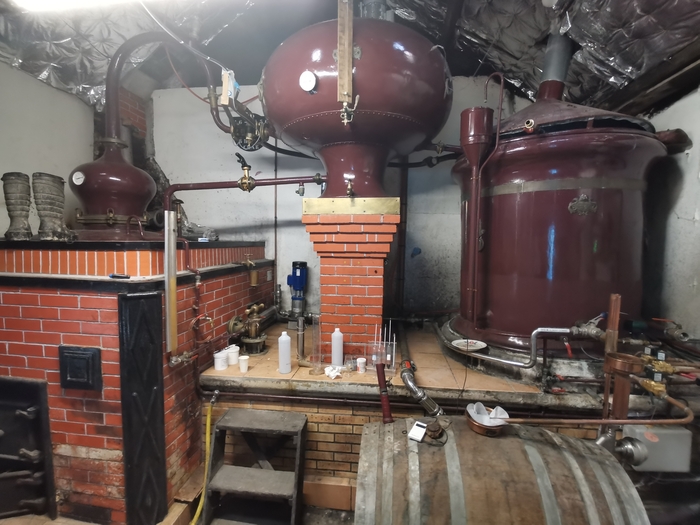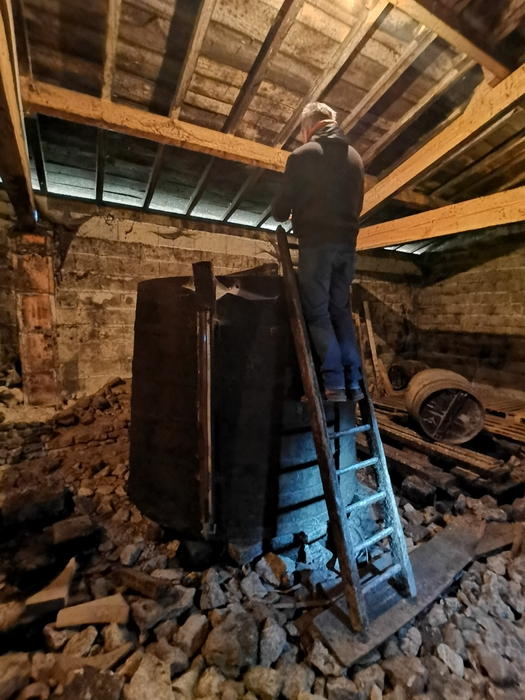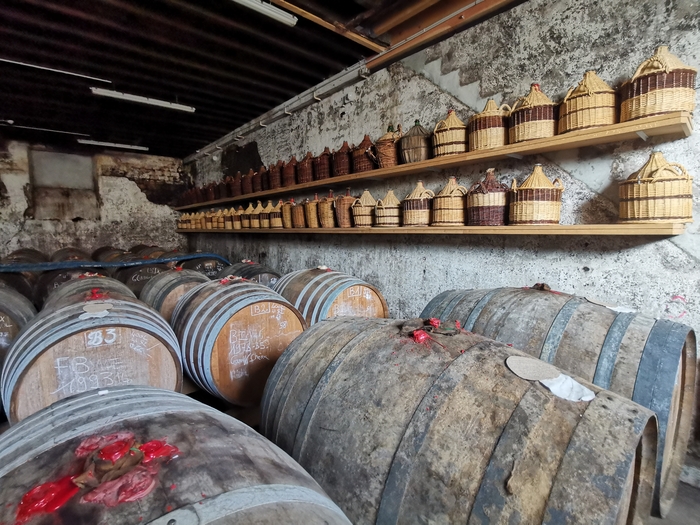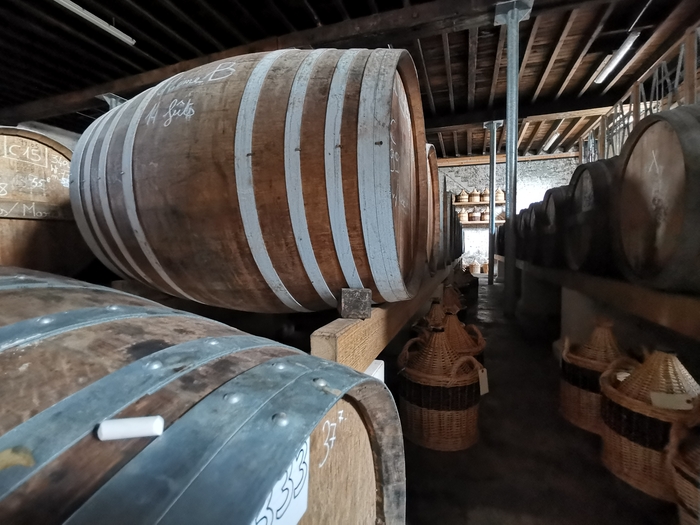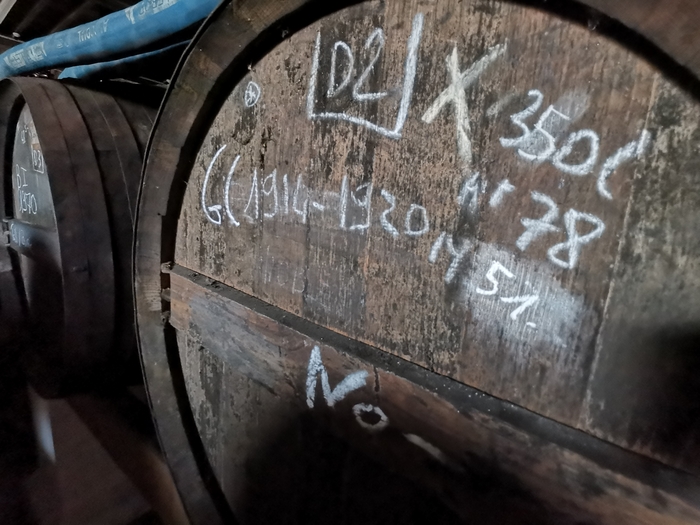
Let's pick up our story where we left off , to focus more on the product and the business of the Grosperrin family.
Cognac is, above all, the vine
Let's do a quick reminder if you like. Any vine planted and declared for cognac must legally go to the production of cognac. The grape varieties authorized in the AOC are: U gni B lanc (used in the vast majority) , Folle Blanche, Folignan, Montils, Semillon and Colombard.
Their harvest must be very healthy: no rot or alteration, because distillation tends to concentrate all the defects. No sulfur is possible either, whether during vinification or aging, for the same reasons. Thus the harvest must be all the healthier.
This vineyard is divided into 6 vintages, which are: Grande Champagne, Petite Champagne, Borderies, Fins Bois, Bons Bois and Bois Ordinaires.
At the heart of the breeder's profession
During our day with Guilhem Grosperrin, we had the chance to follow him to meet a potential delivery person (winemaker/distiller). Guilhem still often takes the road, even if today his fame (and the fact that he buys at more than honest prices) means that more and more samples come to him.
First of all, you should know that the bottling part " specific" to the Grosperrin brand is not entirely profitable. The work of our broker selector is therefore also that of trading for the big cognac houses.
As strange as it may seem, not all buyers of the houses really know how to taste the aged eaux-de-vie used as enhancers in XO blends. They are mostly familiar with younger eaux-de-vie, which meet their markets . It is in this work of exploration and selection that Guilhem's great added value lies.
To explore a land with 4000 distilleries…
So here we are in the Petite Champagne vintage . In a building on the estate, a small 900-litre still is flowing. Discussions ensue about the vine, the grape varieties, the yields, the distillation technique , etc. A few minutes pass like this before Guilhem convinces the producer to go and visit the cellar.
The work then consists of tasting eaux -de-vie from the 1980s and 1990s , already reduced during aging, which is rather rare. 99% of the volumes of cognacs bottled are by merchants. Only 1% are by the winegrowers themselves. Merchants are looking for old, raw, unprocessed eaux-de-vie to blend and bottle their cognac. The producer we are visiting makes this same distinction between his cognacs (already processed, reduced eaux-de-vie) and " brut de fût " eaux -de-vie .
Guilhem does the same, because this type of old eau - de-vie is not very suitable for further ageing, with a view to a future single cask Grosperrin. Sampling is still taken in order to carry out blending tests, as part of the trading activity . However, a tasting of Pineau particularly catches his attention, it will be a case to follow…
… in search of the rare pearl
When Guilhem comes across a beautiful brandy in one of these cellars, he generally tries to buy the entire barrel, including the wood. But this is sometimes not possible, because the oldest brands often reside at the very back of the cellar, with the vintages having gradually accumulated in front of them. They are therefore very complicated to recover. He then returns with a pump, to transfer the future cognac into a tank, which will then be brought to the cellar.
There, the brandy is placed in a barrel that has contained a brandy of the same age, ideally older. The aim is to further improve the rancio and maturity. When no such barrel is available, the brandy is placed in an old barrel. However, this must never have contained a young brandy. The aromatic profiles cannot blend together , because the aromas of "young" are a major defect on an "old" barrel.
Before putting it in the barrel, he may or may not reduce it, depending on what he intends to do in the future. There is no need to rush if the aim is to keep this brandy for around ten years.
Reducing can wait
When a brandy is rich in esters, in fatty substances , one must be very careful with the reduction, which could break its structure. It must then be done slowly , almost drop by drop. On the other hand, in the case of a brandy distilled with few lees, in the style of Martell cognacs , a very rapid reduction is permitted , and even recommended. This distillation without lees in the still makes it possible to obtain a purer brandy . It can go down from 60% to 48% without problem , even more so if it is 10 years old to stabilize afterwards.
The Fin Bois 1990 and the P etite C hampagne 1992 , for example, received a fairly strong but imperceptible reduction . According to Guilhem Grosperrin, " if we had been slower, it would not have been as melted. We would have felt that the water had been added a short time ago, it would not have had time to melt as well."
The choice of reduction and its method therefore really depends on each brandy, and on the knowledge one has of it.
The cellar and its hundreds of barrels
When receiving a brandy, you also have to decide which cellar will house it . The Grosperrin house has several: dry , humid, very humid… the choice is made according to the maturity already acquired.
When a barrel is ready to be bottled, it is brought to the Saintes site. This humid cellar gives the perfect finishing touch, rounding off the corners as they should be.
A dry cellar is more interesting in the long term, therefore for young wines . We then seek to develop a powerful, aromatic profile , to its full potential , which will round out and blend later, which will take its time.
In the AOC cognac, pedunculate and sessile oaks are authorized , whether or not they come from French forests. For its new barrels, Grosperrin uses fine-grained wood , which is quite rare ( barely 10% of sales in the region).
Which wood for which brandy?
The very high-heated gros grain is in principle the most widespread. The vast majority of the market is composed of relatively young cognacs. This type of cask allows to obtain 4-year-old eaux - de-vie that are already well- rounded, aromatic , vanilla -flavored , warm , woody and gourmet after reduction. It is therefore perfect for a VSOP or a young XO . 30% of the production is casked in gros grain for 2 years , and then mixed in an old container or red cask (5 to 10 years), otherwise the distillate will be marked too much .
For very long aging, on the other hand, fine grain is better suited because it preserves the fruity aromas of the distillate. The major problem is that this is a wood that wears out very quickly. It no longer produces anything after 2 or 3 seasons. We must therefore very regularly use new barrels, which can also cost more than twice as much to buy.
Guilhem's favorite barrel is the T5 from the Taransaud cooperage, a fine grain of 270 liters whose wood has benefited from 60 months of drying ( Our article on cooperage will allow you to learn more about the benefits of this drying). After 2 years, it already gives very fine and elegant results. Typically, the Folle Blanche grape variety lends itself particularly to this type of barrel. A large grain would tend to take precedence over the aromas of this very singular distillate.
On the other hand, after these 2 years, this barrel no longer provides anything, except oxygenation. A new T7 barrel is preparation, with a quite exceptional drying time of 7 years!
Ali Baba's Cave
Currently, the oldest brandy still in cask is a 1914-1920. If we talk about demijohns, the oldest dates back to 1810! The famous Grosperrin 52-22 cognac that we were talking about with Michael de Swell de Spirits also comes from one of these very old demijohns.
There is also a very special external storage organization, essential and unique to the region: ORECO (Organisation Économique du Cognac). There are several hundred thousand barrels (!!), which have the great advantage of benefiting from excellent traceability, which is not always obvious for small producers, and which explains the few vintage cognacs on the market.
This general store is approved by the state. When depositing a barrel, you receive a " warrant receipt ", a title of ownership that is negotiated at the bank. The bank buys back this warrant , which allows the depositor to pay his winemaker, his equipment, his invoices, etc. When you want to recover the barrel, you simply pay the amount of the warrant to the bank. Deposits can last several decades , and warrants are exchanged, inherited, or even forgotten...
In the last article of the series , you will learn more about the projects of the Grosperrin house, as well as the final touches that are given to the cognac, just before it is bottled.
